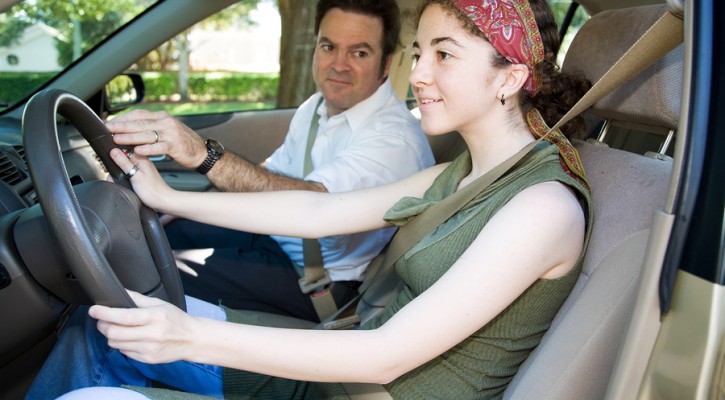Tag Archive: florida gdl laws

Four Ways Teens Benefit from Following Graduated Driver Licensing Laws
May 8, 2009
It isn’t uncommon for teens to rebel against Graduated Driver Licensing (GDL) laws. They may reason that since they passed the driving test, they shouldn’t have to deal with restrictions. Or they may be unfamiliar with the GDL laws in their state and violate them unintentionally. But there are many benefits to obeying GDL laws for teens, such as:
1. They’re a chance to prove your maturity and trustworthiness. One of the basic requirements for functioning in our society is the ability to follow the rules. Teens who are unwilling to do so demonstrate a lack of maturity and make other people, specifically adults, think they can’t be trusted. Conversely, showing that you’re willing to abide by certain restrictions lets adults, specifically your parents, know that you are grown-up and dependable enough to handle additional privileges.
2. They can help you get out of risky situations with your pride intact. You may have the best intentions of following GDL laws, but sometimes friends make that a challenge. It might be hard to resist when a friend wants you to break curfew or pile one too many passengers into your vehicle; GDL laws give you an outside authority you can blame for your refusal to do these things. You can explain that you don’t want to get caught breaking the law because you might lose your license and/or your parents might ground you from driving if you get a traffic ticket.
3. They’re the law. You won’t be lying if you tell a friend you are afraid of losing your license for breaking GDL laws; violating the terms of the law could result in the loss of your driving privileges. If you get a ticket for breaking a GDL law, you will have to pay a fine and your insurance rates, which are already high, could increase. After accruing a certain number of points on your license, you could lose it for a specified period of time and have to pay more fines to get it back. Ignorance of the law is no excuse, so be sure to familiarize yourself with the GDL laws in your state.
4. They really do keep you safe. GDL laws exist because statistically, teens get into many more crashes than adult drivers. According to the National Highway Traffic Safety Administration (NHTSA), sixteen-year old drivers have crash rates that are about three times greater than 17-year-old drivers, five times greater than 18-year-old drivers, and approximately twice the rate of 85-year-old drivers. We know that GDL laws work, because there has been an overall decrease in fatal crashes involving teens nationally since GDL laws began to be implemented. Specific restrictions have also been found to be effective; for example, an NHTSA study found that states with nighttime driving restrictions for teen drivers show decreases in crashes of up to 60% during the restricted hours. GDL laws work because they help teens increase their driving skills while minimizing the risks of being on the road with limited experience.
You can probably see how these four factors tie together. If you break GDL laws, you show the adults in your life that you can’t be trusted, you are more likely to be peer-pressured into taking risks you know you shouldn’t take, you take a chance on losing your license, and you raise the possibility that you or someone riding with you will be injured or killed in a crash. When you choose to follow GDL laws, you have nothing to lose and everything to gain.

Support for Graduated Driver Licensing Laws
April 30, 2009
According to the National Highway Safety Administration (NHTSA), adolescent drivers, especially 16- to 17-year olds, are disproportionately involved in deadly motor vehicle crashes. Sixteen-year old drivers have crash rates that are about three times greater than 17-year-old drivers, five times greater than 18-year-old drivers, and approximately twice the rate of 85-year-old drivers. According to the NHTSA and the Insurance Institute for Highway Safety (IIHS), specific contributors to these higher crash rates include:
- Lack of driving experience and skills: Compared with crashes of older drivers, those of 16-year-olds more often involve driver error.
- A propensity towards risk taking behavior and poor decision-making.
- Driving at night: Per mile driven, the nighttime fatal crash rate for 16-year-old drivers is twice as high as during daytime hours.
- Distraction from teenage passengers: Fatal crashes involving 16-year-old drivers are more likely to take place when other teens are in the vehicle, and the risk increases with every additional passenger.
- Speeding: Sixteen-year old drivers have a higher rate of crashes in which excessive speed is a contributing factor.
Graduated Driver Licensing (GDL) programs help young drivers get driving experience progressively while minimizing risk, beginning with a restricted permit and eventually leading to full licensure.
Most programs include three stages:
- Learner Stage: Supervised driving, ending with a road test.
- Intermediate Stage: Limiting unsupervised driving in high-risk circumstances.
- Full Privilege Stage: A regular driver’s license.
Provisions of graduated licensing laws may include:
- Required hours of adult supervision during the learner stage.
- Restrictions on late-night driving.
- Restrictions on driving with teen passengers.
- Seat belt requirements for drivers and passengers.
- Restrictions on cellular phone use.
- Prohibiting the driver from moving up to the next level due to traffic violations.
GDL laws in most of the states that have them do not comply with all of the recommendations of the NHTSA; still, there has been an overall decrease in fatal crashes nationally since GDL laws began to be implemented. In 2006, 7,463 drivers who were 15 to 20 years old were involved in fatal crashes – an eight percent decrease from 8,074 involved in 1996. Individually, states with GDL laws also show improvement:
- California: A five percent decrease in crashes for 16- and 17-year-old drivers.
- Florida: A nine percent decrease in crashes for 16- and 17-year old drivers.
- Michigan: A 26% decrease in crashes for 16-year-old drivers.
- North Carolina: A 25% decrease in crashes for 16-year-old drivers.
- Oregon: A 29% decrease in crashes for 16-year-old drivers and a 16% decrease in crashes for 17-year-old drivers.
NHTSA research has also found that the most comprehensive GDL programs are associated with the greatest decrease in crash rates for teen drivers.
It is more difficult to evaluate the individual components of GDL laws because of the overlap of restrictions, but the NHTSA has conducted some research in this area. An analysis of the passenger restriction laws in California, Massachusetts, and Virginia indicated that there were 740, 173, and 454 fewer 16-year-old involved in crashes per year, respectively. A different study found that states with nighttime driving restrictions for teen drivers show decreases in crashes of up to 60% during the restricted hours.
Public support for GDL laws is also strong. In 2007, the NHTSA conducted the Motor Vehicle Occupant Safety Survey (MVOSS), a national telephone survey about driver safety. Seventy-nine percent of the participants said that teen drivers should proceed from a learner’s permit to a provisional license status rather than directly to an unrestricted adult license. The results of the survey also indicated strong support, ranging from 73% to 99%, for specific restrictions on provisional driver license status, such as:
- Requiring young drivers to wear a seat belt at all times.
- Prohibiting driving after 9pm, unless supervised by an adult.
- Limiting the number of teenage passengers allowed in the vehicle.
- Prohibiting the use of a cellular phone while driving.
- Requiring the new driver to hold the provisional license for at least one year without any traffic violations before receiving an unrestricted adult license.
GDL provisions are still in their infancy in many states, so evaluating the results of these programs is difficult. However, outcomes so far are promising. The enactment of and enforcement of these laws are important steps in efforts to save the lives of young drivers.

Five Worst Teen Driving Mistakes: Part One
December 11, 2008
Most parents live in dread of the day their teens get driver’s licenses and get behind the wheel on their own. Their concerns are well-founded, since teen drivers have the highest death rates in car crashes of any age group. Motor vehicle crashes are the number one cause of death among Americans aged 15-20. But parents can help their teens be a safer driver even after they are licensed, particularly by paying attention to common risk factors. In this five-part series, we’ll discuss the five worst teen driving mistakes:
- They don’t wear safety belts.
- They drink and drive.
- They panic/overcorrect in emergency situations.
- They drive too fast for conditions.
- They ride with other teens.
In this, part one of the series, we’ll emphasize the importance of wearing safety belts. First, you’ll need to set the right example for your children by wearing your safety belt. “Do as I stay, not as I do,” doesn’t work with teens, particularly when they’re out of your sight and you can’t personally enforce the rule.
Also, make sure you never pull out of your driveway or a parking space until everyone in the vehicle is wearing a seat belt. Many high school students fail to use their safety belts even when riding with adults who are buckled up. An observational survey conducted at 12 high schools found that 46 percent of high school students were not wearing their safety belts when riding with adult drivers. About half of the unbelted students were riding with adults who were belted. If your teens are used to wearing safety belts as passengers, they’ll be comfortable wearing them as drivers.
Next, educate your teen about the benefits of wearing safety belts. Here’s some supportive information:
- Research has found that lap/shoulder safety belts, when used, reduce the risk of fatal injury to front-seat passenger car occupants by 45 percent and the risk of moderate-to-critical injury by 50 percent. For light truck occupants, safety belts reduce the risk of fatal injury by 60 percent and moderate-to-critical injury by 65 percent.
- Ejection from the vehicle is one of the most injurious events that can happen to a person in a crash. In fatal crashes in 2005, 75% of passenger car occupants who were totally ejected from the vehicle were killed. Safety belts are effective in preventing total ejections. Only 1% of the occupants reported to have been using restraints were totally ejected, compared with 30% of the unrestrained occupants.
- Safety belts should always be worn, even when riding in vehicles equipped with air bags. Air bags are designed to work with safety belts, not alone. Air bags, when not used with safety belts, have a fatality-reducing effectiveness rate of only 12 percent.
Third, educate your teen about the safety belt laws in your state. Be sure to review the graduated licensing laws – safety belt enforcement may differ from that of fully licensed drivers.
Statistical source: National Highway Traffic Safety Administration
